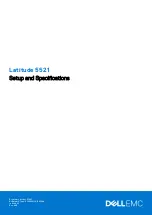
UAG5100 User’s Guide
315
C
H A P T E R
3 1
Bandwidth Management
31.1 Overview
Bandwidth management provides a convenient way to manage the use of various services on the
network. It manages general protocols (for example, HTTP and FTP) and applies traffic prioritization
to enhance the performance of delay-sensitive applications like voice and video.
31.1.1 What You Can Do in this Chapter
) to control bandwidth for services passing
through the UAG, and it identifies the conditions that refine this.
31.1.2 What You Need to Know
When you allow a service, you can restrict the bandwidth it uses. It controls TCP and UDP traffic.
Use policy routes to manage other types of traffic (like ICMP).
Note: Bandwidth management in policy routes has priority over policy routes to manage
the bandwidth of TCP and UDP traffic.
If you want to use a service, make sure both the firewall allow the service’s packets to go through
the UAG.
Note: The UAG checks firewall rules before it checks bandwidth management rules for
traffic going through the UAG.
Bandwidth management examines every TCP and UDP connection passing through the UAG. Then,
you can specify, by port, whether or not the UAG continues to route the connection.
BWM Type
The UAG supports two types of bandwidth management: Shared and Per-user.
The Shared BWM type is selected by default in a bandwidth management rule. All users to which
the rule is applied need to share the bandwidth configured in the rule.
If the BWM type is set to Per-user in a rule, every user that matches the rule can use up to the
configured bandwidth by his/her own.
In the following example, you configure a Per-user bandwidth management rule for billing-users
to limit outgoing traffic to 300 kbs. Then all billing-users (A, B and C) can send 300 kbps of traffic.
















































